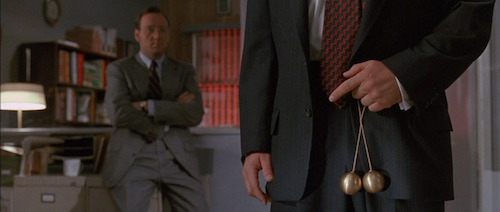Word for the Wise
Preternatural (prih-tur-NATCH-uh-rul) – existing outside of nature; extraordinary. Example from George Will: “Beyond his preternatural affability, there is some acid and some steel.”
Champagne Trick
A raisin dropped in a glass of fresh champagne will bounce up and down continually from the bottom of the glass to the top.
From My “Work-in-Progress” Basket
Principles of Wealth: #11 of 61
To acquire wealth, it is helpful to be able to define it. Fewer than one in ten people can. The answer is “stored value.”
That kid driving the red Ferrari? The doctor with the huge white house on the ocean? The attractive older woman wearing the Oscar de la Renta gown?
They look wealthy, but you can’t tell by their possessions. They might be poor. They might be worse then poor. They might be in debt.
What about your friend that is “pulling down two hundred G’s” a year selling hedge funds? Or that obnoxious kid you met in law school that charges $700 an hour for his services?
They may be rich. They may not be. Income can be an important factor in creating wealth but it is not a measure of it.
There is only one way to measure wealth – and that is the amount of value an individual has set aside for future use.
In financial terms (there are many forms of wealth), we generally refer to this as net worth: the difference between one’s assets and one’s liabilities. I prefer a more stringent definition: one’s net investible wealth. Net investible wealth is net worth minus any assets you plan to keep (and not sell) for the rest of your life.
Making big money and spending big money create the impression of wealth. But true wealth is only what you have put aside for future use.
Quick Marketing Idea: The Emotional Power of Repetition
Why is it that we never tire of hearing our favorite songs?
According Derek Thompson, writing in Hit Makers, it’s because our brains our wired for it. We respond to repetition when it follows certain patterns.
He cites a study on mice:
Exposed to the sound of a B note played repeatedly, the mouse will pay brief attention and then lose interest. But if a minor variation is added – say, the B note followed by a C note – the mouse’s attention will reengage. Not just that, but it will stay engaged for a good length of time even when the “tune” goes back to just a B note.
“A single variation is sufficient to break the mouse’s complacency and return its interest to the music,” the author posits.
Further tests suggested that the most effective pattern for keeping a rodent’s attention was: BBBBC-BBBC-BBC-BC-D. This, Thompson says, “is uncannily similar to the structure of successful pop songs that follow a pattern of verse-verse, chorus, verse-chorus, bridge.”
(It’s also similar to the rhyme structure of some poetry, like some sonnets.)
Advertisers (and propagandists) have long known about the emotional power of repetition. It makes the advertisement more memorable. And it makes it more believable as well. (See D. Trump.)
Suggestion: Lay this pattern over your next medium- to long-term promotional piece before you post it.
Look at This…
https://biggeekdad.com/2018/02/old-man-thinks-hes-younger/





